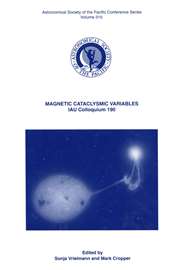Article contents
Space Debris
Published online by Cambridge University Press: 27 February 2018
Abstract
Man-made, artificial space debris is of interest to the study of interplanetary dust for two reasons: (1) In many regions of Earth orbital space, the space debris flux is larger than the natural meteoroid flux, complicating the study of interplanetary dust, and (2) models and experiments developed to understand space debris may have application to the study of interplanetary dust. The purpose of this paper is to summarize the space debris environment as it is understood today by characterizing the models used to predict the space debris environment and describing the measurements to test the model predictions.
Within the last 5 years, the space debris environment has been measured by a number of experiments. These experiments have revealed significant sources of debris in addition to the assumed major source of satellite explosions. Understanding these sources has required the development of more complex models and additional insight into the design and operation of spacecraft. Increased awareness of space debris issues at an international level has led to measures that have reduced the rate of growth in the environment. However, the number of new debris sources discovered seems to be proportional to the number of new measurements of the environment.
Information
- Type
- VI. Dust Measurements from Earth Orbit
- Information
- Copyright
- Copyright © Astronomical Society of the Pacific 1996
References
- 2
- Cited by

